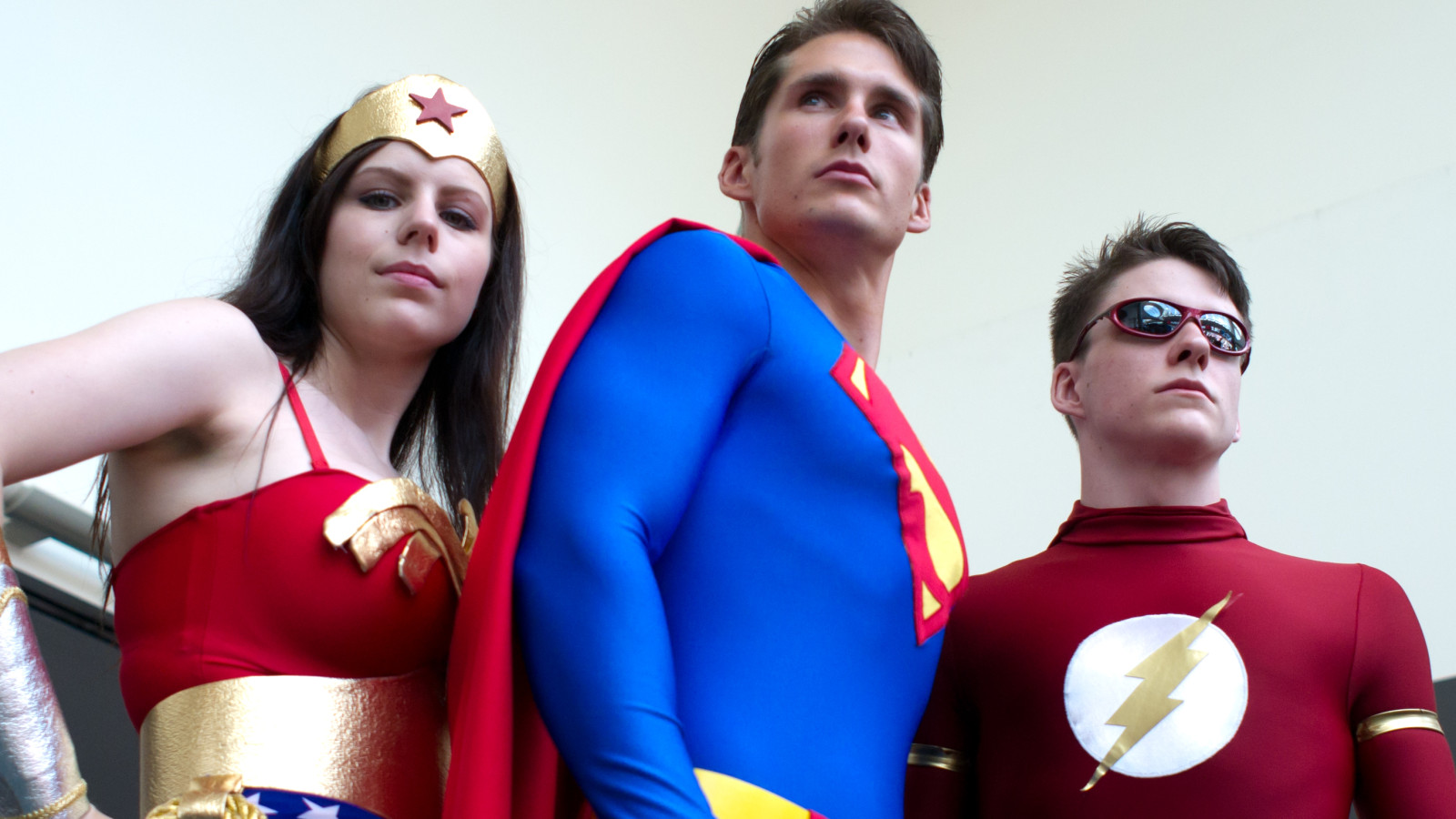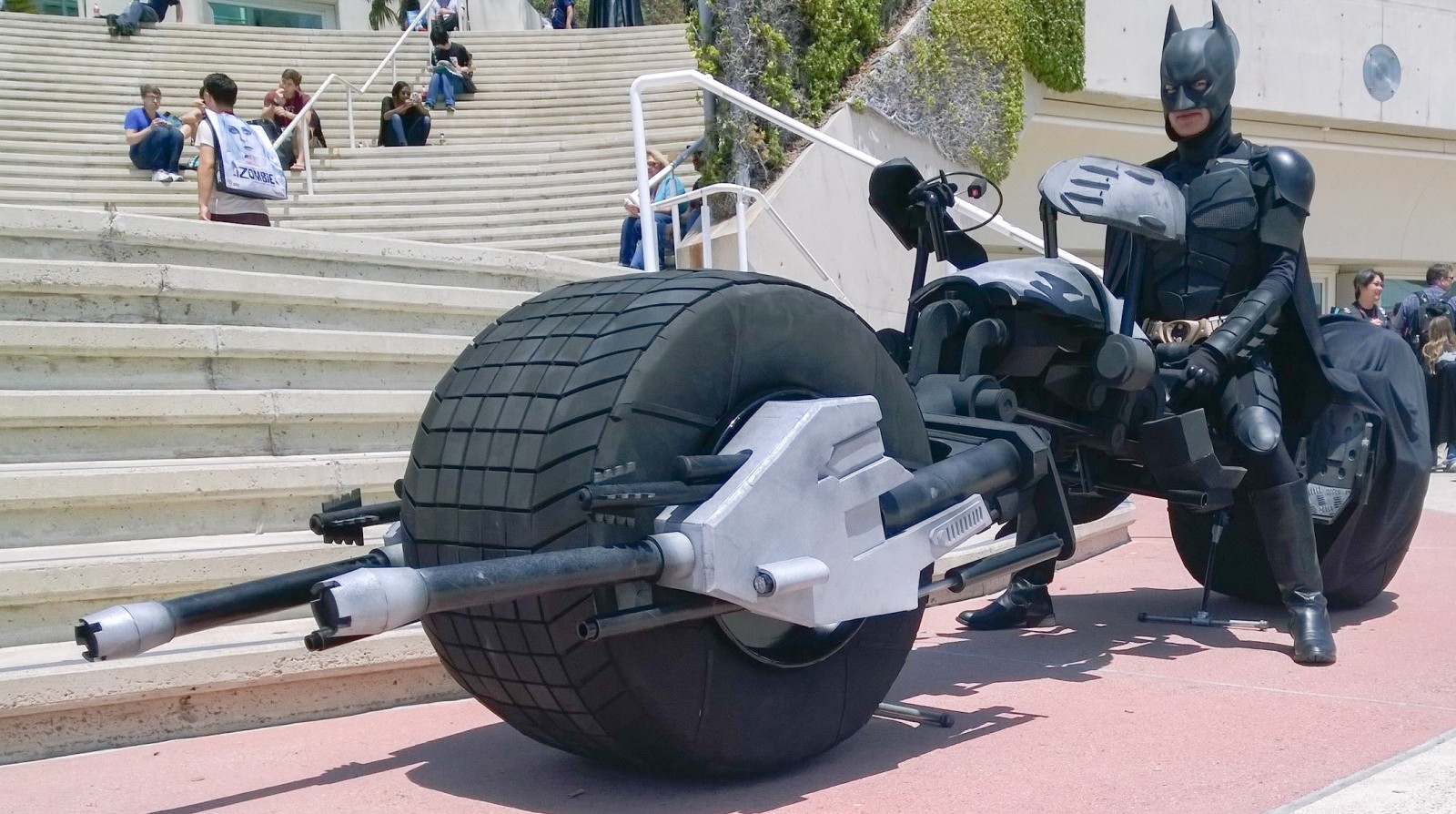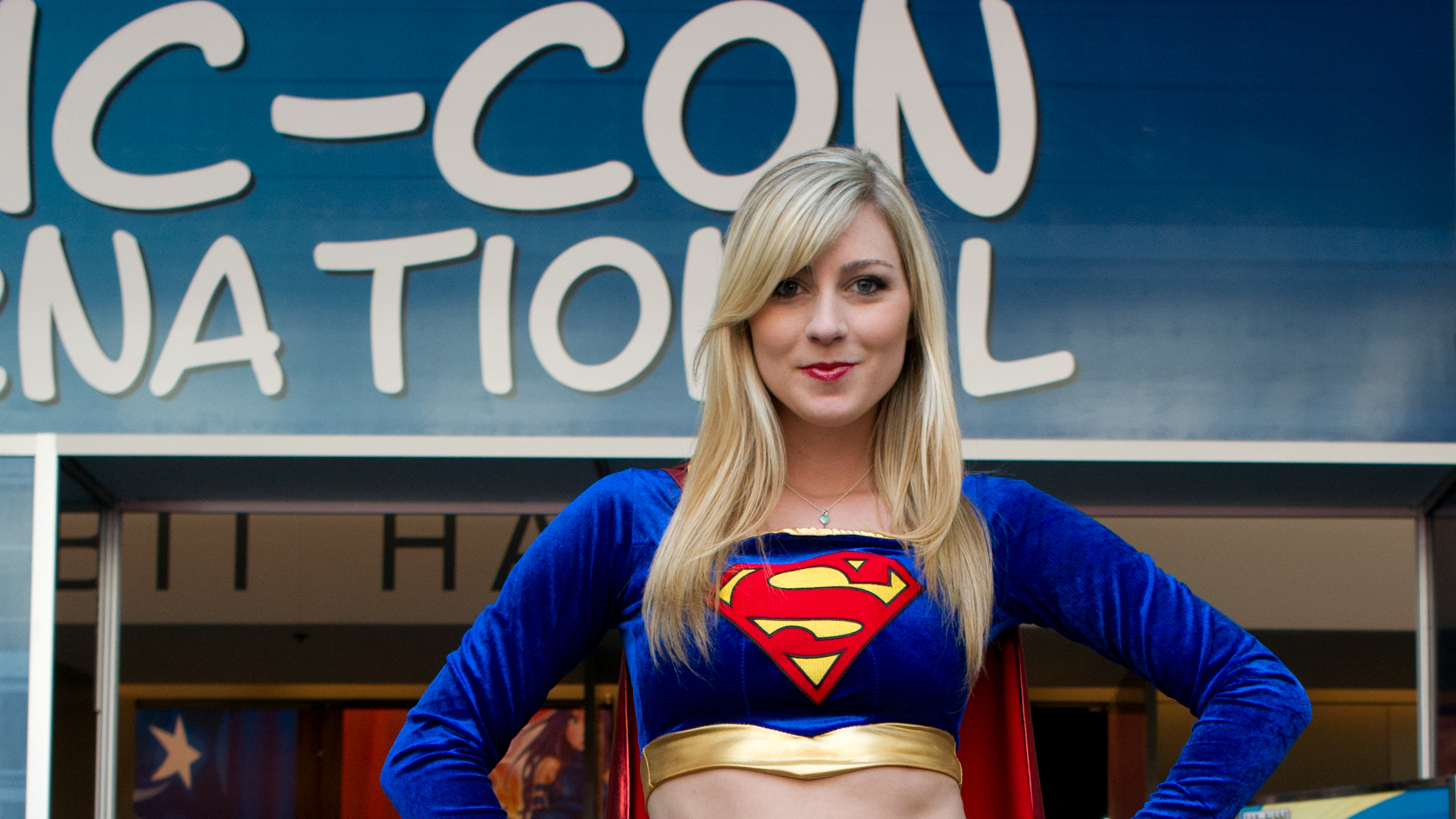Tomorrow night begins my seventh sojourn to the greatest geekfest and pop-culture event on the planet. Imitator shows are everywhere this Century, but none commands character and class like the original. San Diego Comic-Con is an amazing amalgamation of hopes and aspirations—and the grandest storytelling—where, for four days and a Preview Night, tens of thousands of people can be themselves—fit in, rather than feel oddball—or be whom they would want to be by dressing up as beloved superheroes or villains and by adoring the storytellers and actors behind them.
The first, full three-day event took place from Aug. 1-3, 1970, at the U.S. Grand Hotel, with about 300 attendees and sci-fi luminaries, including Ray Bradbury and A.E. van Vogt. This week, 130,000 attendees will storm San Diego Convention Center to enter an alternate reality, where the social rules binding them everyday no longer apply.
From the early days, the convention embraced other arts, including pulp media such as movies. However, comics’ prominence diminishes in the new century. Hollywood’s presence looms, and Comic-Con is now a required pilgrimage for actors, filmmakers, producers, or screenwriters.
Outside lookers-on, watching excerpts and streams on cable TV or from the web, see a very different event than the one I and other attendees experience. The videos focus on Hollywood types, who actually are a much smaller part of the real Con than appears. Their presence is amplified, like other places they go, but the real stars are more often behind-the-scenes bit players who create characters and tell stories or the fans wanting to be someone else.
Many attendees come dressed in costumes. For a day, or even a few, they take on another persona. They become someone else—perhaps whom they would rather be, but most certainly not who they are. They can be heroes and even stars, for most anyone well-costumed will be repeatedly stopped for photos. Comic-Con lets them be not just someone else but someone special.
Batman and Superman
Behind this role-playing is a revelation—the reason why comic book stories, and the heroes within, so broadly appeal and why the Con is a pop-fest Mecca: Everyman. The typical superhero is an average person gifted with special skills or powers that conceptually are within reach; they are achievable by almost anyone. The hero takes on another role, becomes someone else, to practice his or her trade-craft.
Consider two of the most iconic superheroes, who will interact in an upcoming movie: Batman and Superman. On Krypton, Kal-El would be no one special. He would be everyman. But on earth, nourished by the light of the yellow sun, he is transformed. He is Superman. He is us, but who many of us would want to be.
His emotions are familiar, as are his personal struggles. Clark Kent is a misfit. The only time he can truly be himself is when wearing the costume. Otherwise, he hides identity and capabilities. Many of the Comic-Con attendees I have interviewed over the years share similar sentiments about themselves. They are geeks who are treated as freaks if they talk about things that matter to them at their workplace, for example, or even among family members. But during the Con, they can be themselves, shedding the personas they wear to fit in.

That is one way, among many, why Superman is iconic. The point is essential to understanding any superhero’s appeal. Strip back their powers and they are little different from you or me. Expose Superman to Kryptonite and he is us.
Batman’s role is different. Kal-El pretends to fit in to survive, to have a functional life. Bruce Wayne is the wronged man seeking justice. Who cannot identify with that?
The two superheroes share much in common. Their parents died under tragic circumstances. Both are vigilantes—Superman strengthened by the light of day, Batman enlivened by the dark of night. Neither can be with the woman he loves. The men are similarly tortured souls.
But Batman’s broad appeal tugs deeper at our personal and social psyches:
- With the right training, anyone could assume the role of The Dark Knight. No superpowers are required.
- A street thug killed Wayne’s parents, which for many fans taps into familial fears about loss and desires for justice.
- Then there is primal fear—of bats, which adult Wayne must overcome and embrace. Who can’t relate to that?
“Batman is proof you don’t need superpowers to be a superhero—and the poster boy for what a bad childhood can do to you”, according to his DC Comics bio. By day, he is billionaire businessman playboy Bruce Wayne; by night, he is Gotham City’s winged vigilante avenger.
“In his crusade against injustice, two questions always loom: How far will he go to protect the innocent, and will he sacrifice his humanity along the way?”, the official bio asks. Batman is a very real character, He is everyman, and no man. He is us. Strangely, so is Superman as portrayed in movie “The Man of Steel”. Now he kills. What will be the eventual result of that?
Hero’s Journey
But the identifiability of Batman or Superman is much broader. In 1949 book The Hero with a Thousand Faces, Joseph Campbell proposes the “archetypal quest theory”. He asserts that we all share a collective unconscious that in literature is expressed as the “hero’s journey”, or Monomyth, which is found in stories across cultures and history.
The journey goes through 17 stages, which are simplified as The Departure, The Initiation, and The Return. During the first phase, the hero reluctantly begins his journey. The second trains and challenges him. The last puts him on the road home to fulfill his destiny. Homer’s The Odyssey is classic example of the hero’s journey.

In popular, modern literature and film, Harry Potter is a good example of the Monomyth. He receives the hero’s “Call to Adventure” but “Refusal of the Call” through the Owl’s letters and the magical removal from his aunt and uncle’s home. The supernatural, or something akin to it, is a crucial element of the Monomyth; magic in this tale. Each part of Harry Potter’s quest reflects the heroic struggles of everyday life—the family (where his cousin is favored), making friends and learning at school; overcoming personal fears (and real monsters); and accomplishing difficult tasks (defeating Lord Voldemort, among them). Harry Potter is an endearing and identifiable character because his struggles are our own. Interestingly, like Bruce Wayne and Kal-El, he is orphaned and his parents are tragically killed.
Bruce Wayne’s journey charts similar heroic, although murkier, course. The story told by the movie trilogy directed by Christopher Nolan—”Batman Begins”, “The Dark Knight”, and “The Dark Knight Rises”—follows the basic hero’s journey. Henri Ducard/Ra’s al Ghul calls Wayne to train with the League of Shadows, which the playboy at first rebuffs then answers by fulfilling a task with a blue flower. He trains, developing supernatural-like capabilities, fulfills tasks, and overcomes temptations before returning to fulfill his destiny in Gotham City. The basis of Bruce Wayne’s childhood fear becomes the symbol for his role. During the first movie, he tells butler Alfred Pennyworth: “Bats frighten me. It’s time my enemies shared my dread”.
What of Superman’s journey? Kal-El’s parents fling him away from dying Krypton to Earth, where his lonely sojourn begins. His early trials are mostly internal, as the growing boy struggles to hide his superpowers as they develop. He eventually is called to the “Fortress of Solitude”, or “Secret Citadel”, where the memory of his father trains the young man. Clark Kent returns to Metropolis to fulfill his Messianic destiny.
The roles they play, the personas the heroes assume, the events that shape their characters, and the experiences that haunt them are hugely identifiable. The appeal is primal. Only the extraordinary skills or superpowers separate these heroes from us. Their stories are our own. That is what San Diego Comic-Con is all about.
Editor’s Note: A version of this story appears on BetaNews.
